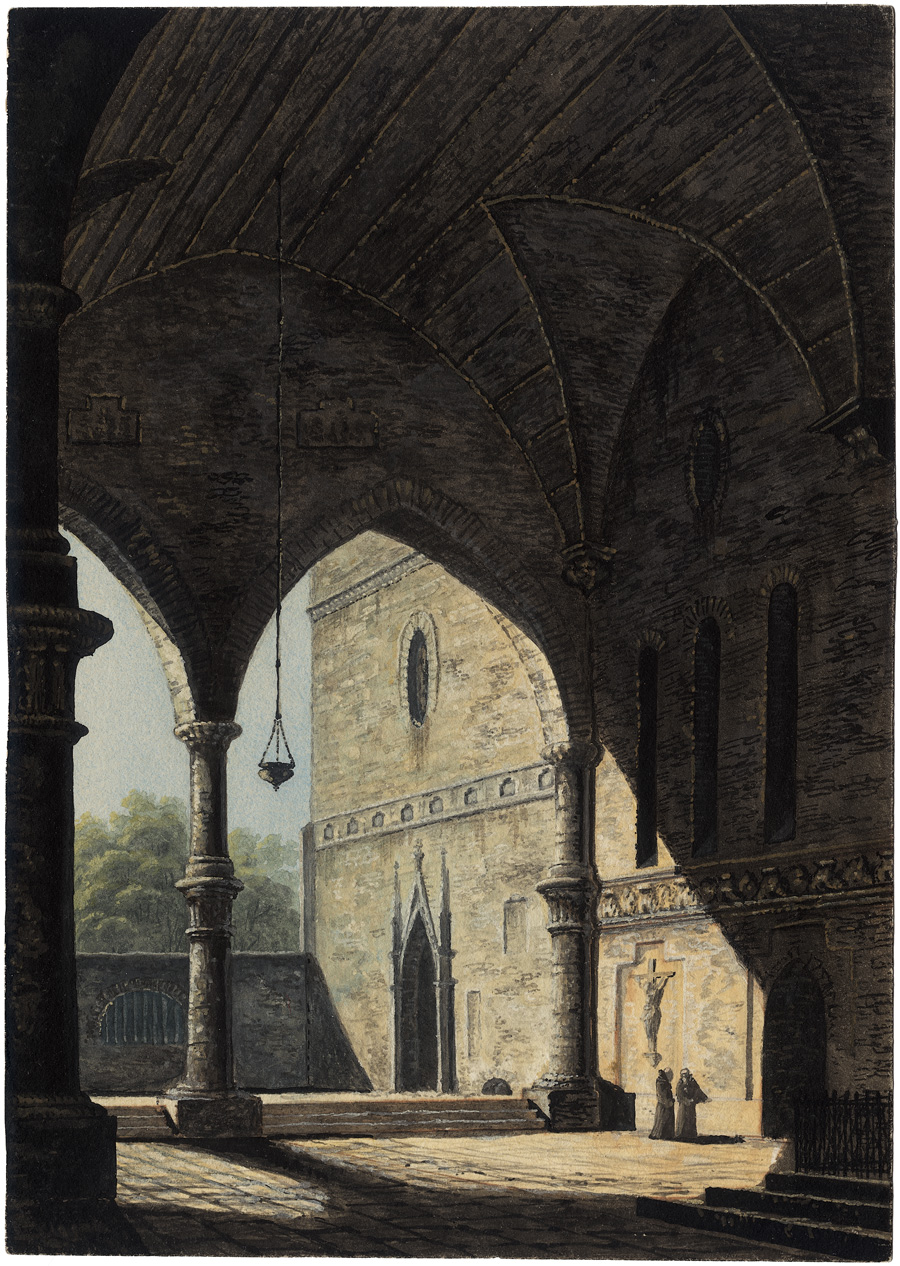Loading the page ...
Carl Blechen
(1798 Cottbus – 1840 Berlin)
A Gothic Portico with two Monks before a Crucifix. Watercolour and gouache. Verso: A Goose-quill with a Coloured Billet. Watercolour. 23.9 x 17 cm. Ca. 1824–27. Paul Ortwin Rave, Karl Blechen, Leben, Würdigungen, Werk, Berlin 1940, No. 418.
This interesting and atmospheric watercolour dates from the artist’s early period. After training at the Berlin Academy in the years 1822–24 and a stay in Dresden in the summer of 1823, where the young artist met Johan Christian Clausen Dahl and probably Caspar David Friedrich as well, Blechen was appointed – on the recommendation of Karl Friedrich Schinkel – as stage-designer at the Königstädtisches Theater in Berlin in 1824. Up until 1827, when Blechen embarked on a career as a freelance painter, he was to design sets and scenery for this theatre.
As a stage-designer and decorative painter Blechen was exposed to a great diversity of stylistic impulses. The major impact was undoubtedly exerted by Schinkel’s Romantic stage designs. Other stylistic and iconographical influences came from contemporary set-designers, such as the members of the Quaglio family in Munich and the Vienna-based Antonio de Pian, whose designs were also disseminated by lithographs. Thus Blechen’s design for a theatre set of a Gothic Vault with Tomb (Rave 427), for example, is an exact copy of a lithograph by de Pian dating from about 1820 (Schwarz 5).
The present sheet is a delightful and perfectly preserved testimony to Blechen’s activity as a stage-designer. In keeping with its function as theatre decor, the scene is shown from a low angle, which enhances the vastness and verticality of the rendered architecture. Warm, clear sunlight falls into the Gothic hall from the left, illuminating a crucifix on the wall of the nave and the tiny figures of two monks, who are dwarfed by the huge portico. Behind the wall of the monastery the viewer can make out the fluffy green foliage of trees and a cloudless summer sky. The underlying tenor of the scene is remarkably serene and carefree and not yet dominated by the sombre theme of transience, which marks the artist’s later works.
Provenance: C. Brose Collection, Berlin; his sale, Kunstauktion XL, Hollstein & Puppel, Berlin, 8–10 November 1928, no. 26.
